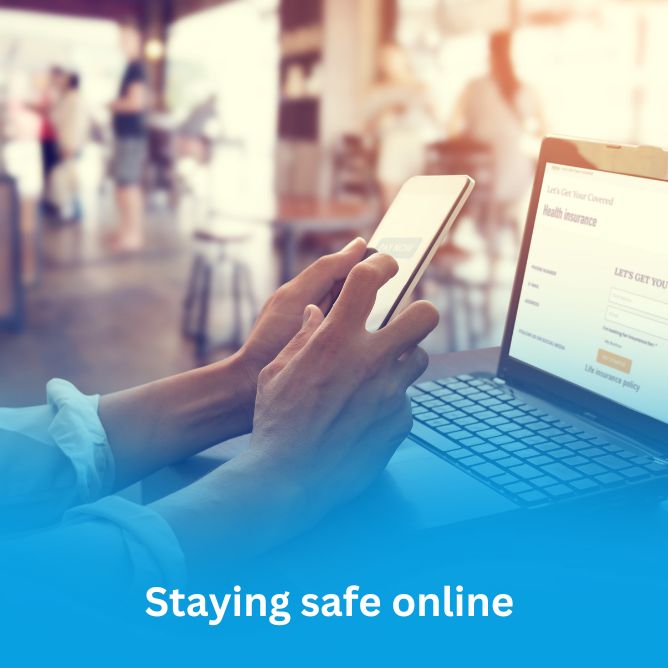Learn about the five step process to fibre installations
You will be guided through the fibre installation process by your service provider who will answer your questions and set out a process roadmap to ensure you understand what happens and when it will happen during the fibre installation process.
As part of the connection process you will need to consider which installation options best suit the home you live in. Rights of access may need to be considered if you live down a right of way, on a shared driveway or an apartment.
If you rent, be aware that only the property owner can give permission to have fibre installed.
There are five steps to install fibre at home:
- Choose a Broadband Service Provider
- Gain authorisation
- Pre-installation appointment
- Build
- Connection
Process overview
After you have used the address checker to see if fibre is available in your area, choose a service provider. Decide which broadband package best suits your household needs, including speed and data cap. The service provider will contact the Local Fibre Company to:
- Pass on any relevant specific information about you and your property that you have provided;
- Arrange an initial site visit where a qualified technician will visit your property and work through with you the best way to install the fibre outside and inside your home;
- Arrange and carry out physical installation including any reinstatement of property surfaces.
How long does it take?
Ideally, fibre installation should only take a few weeks, but it can take a lot longer under special circumstances or if consents are required.
Well over 1 million New Zealand homes and businesses have already ordered fibre and Local Fibre Companies are carrying out more than 10,000 new connections every month. Your Local Fibre Company will connect you as quickly as possible and will contact you as soon as they are able to arrange installation.
If you have a shared situation and need to arrange consents this can slow the process as you rely on others to complete the forms. Likewise, if you are renting and need to obtain consent from a landlord via a property manager.
Step 1: Choose a service provider
After you have used the address checker to see if fibre is available in your area, choose a broadband service provider. Decide which broadband package best suits your household needs, including speed and data cap. The broadband service provider will contact the Local Fibre Company to:
- Pass on any relevant specific information about you and your property that you have provided;
- Arrange an initial site visit where a qualified technician will visit your property and work through with you the best way to install the fibre outside and inside your home;
- Arrange and carry out physical installation including any reinstatement of property surfaces.
- Generally, your service provider is the point of contact for technical support, however, during the fibre installation the Local Fibre Company will be talking to you directly.
Step 2: Gain authorisation
If you live in a self-contained home, that you own, and fibre can be connected directly from the street, you will not require consent, other than to provide authorisation to commence with the installation.
However, if you live down a right of way or apartment building, consent may be needed from your neighbours or a body corporate. Depending on the nature of the installation, the Local Fibre Company might have a statutory right of access to the shared property; it might be required to give neighbours the opportunity to object to your installation, or it might need to get consent from your neighbours. The Local Fibre Company will manage this process and keep you informed of the steps and timeframes.
If you are renting, you will need to seek consent from your landlord before the installation can proceed.
Step 3: Pre-installation appointment
The Local Fibre Company installer will arrange a pre-installation appointment referred to as the site scope visit.
At this time, the installer will discuss appropriate options for the fibre installation, usually underground or aerial, that best suits your premises. They will discuss where the External Termination Point (ETP) is located that connects the fibre from the street to the house and where the Optical Network Terminator (ONT) will be located within your home. The ETP is a small box installed at an agreed location on the outside of your house, and the ONT is a small box (approximately 18cm x 12cm) that is usually placed on an internal wall.
Once the installation plan is agreed, you sign a contract and the installation is scheduled.
If you are in a shared situation, the Local Fibre Company will make the fibre available to everyone, but will only install into your home. This means that in the future your neighbours can install fibre to their homes.
The Local Fibre Company covers the cost of most residential properties. This includes connecting your property to the fibre network in your street, reinstating any surfaces that have been disturbed, installation of the ETP and ONT, and connecting to your new modem.
There are some costs to be aware of: for example, if you require additional power plugs for the installation, request another installation option, want to move the ONT after installation or require additional hard wiring for fibre sockets.
Check your installation plan with your Local Fibre Company thoroughly before signing.
Step 4: Build
The next step is installing the fibre from the road into your home and it’s done in two stages.
The installer follows your agreed install plan (this could be via aerial, underground duct, buried cable, mounted along a fenceline) and connects the fibre to your home’s External Termination Point (ETP), which is a small box installed at an agreed location on the outside of your house.
You don’t need to be home for this to be completed.
Step 5: Connection
Once the fibre is built to the outside of your house, it now needs to be connected internally.
A technician returns to complete the internal wiring and installation of the fibre to another small box inside your house called the Optical Network Terminal (ONT).
You will need to be home for up to four hours for this visit whilst the technician brings the fibre, from the outside to the inside of your home.
The technician will complete the internal wiring and installation of the new fibre equipment (i.e. a new broadband router/modem) in the agreed position. The technician will test the equipment to ensure connection of the broadband service and the landline telephone service (if this has been ordered) before leaving.
If a new modem has been installed you will need to reset your WiFi password for any remote devices within the home for connectivity. If you have any issue during this process you should contact your broadband service provider.
Before You Dig
Before you begin any type of ground works, is is important the person completing the work has correct and up to date information on the location of cables, pipes and other utility assets in and around any proposed dig site. This is to ensure protection of themselves and valuable assets during these works.
BeforeUdig offer a free online service created to assist contractors to comply with the requirement for any person intending to dig to inform Essential Infrastructure Owners such as telecommunications and obtain asset location plans prior to the commencement of design or excavation works.
Aims are to:
- Simplify the process of requesting plans for a dig site
- Prevent injuries to workers
- Protect utility assets from interruption and preventable damage
- Protect the community from the consequences of utility infrastructure failure
- Provide a single point of request for information on where utility assets are located
Contractors and industry specialists may utilise this resource when conducting activities such as:
- Building or designing a new optic fibre network
- Road restoration works
- Responding to emergency works such as broken water mains
- Undertaking scheduled maintenance of an existing underground asset
Individuals may also utilise this resource when conducting activities such as:
- Building a new fence
- Installing a swimming pool or car port
- Planning a new subdivision
Note: While it is free to use the beforeUdig service to gather information on the possible presence of utility assets in and around your proposed excavation site, some utilities and local government organisations may charge to request plans and locate services. You will need to check with the relevant asset owners listed on your confirmation sheet if you require more information about these possible charges.
Don’t play around with your safety – make sure you know what’s below to keep yourself, those around you, and your community safe when working near underground utilities.
Watch safety video








